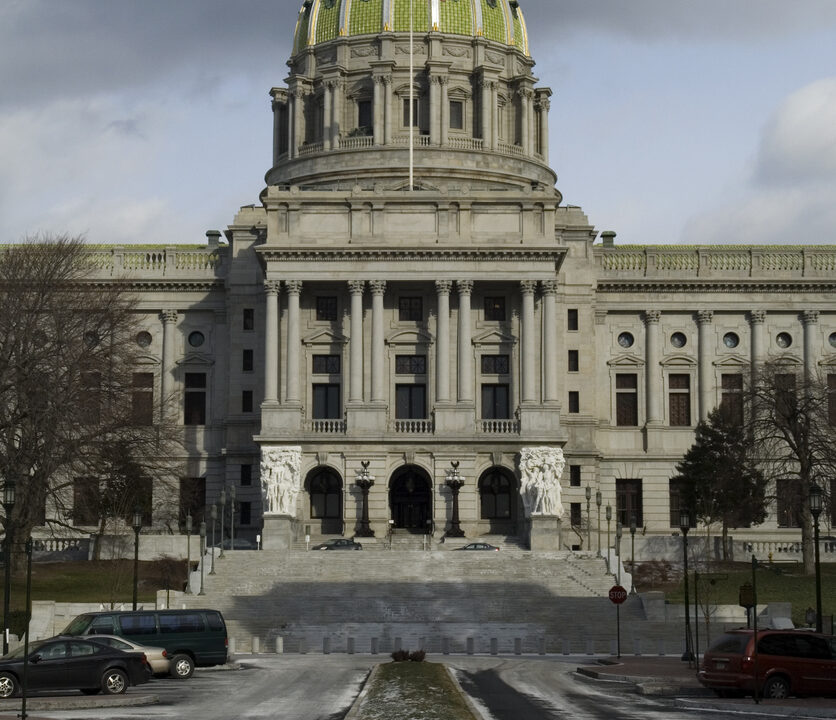Deficit Watch

Deficit Watch: April 2025
Improving Pennsylvania’s economy will help close the deficit.
Background
Pennsylvania faces serious fiscal challenges. The enacted 2024–25 General Fund budget created a $3.6 billion structural deficit. Gov. Josh Shapiro’s 2025–26 budget proposal would increase the deficit to $4.8 billion. Revenue collection data for this fiscal year shows that Pennsylvania’s budget deficit may be larger than expected.
Revenue Estimates and Collections
- In March 2025, Pennsylvania collected $6.25 billion in revenue, $70 million above the official revenue estimate. While March collections exceeded the estimate—revenue sums still lag for fiscal year (FY) 2024–25. In total, FY-to-date collections are $33.9 million below estimated revenues.
- Shapiro’s 2025–26 budget proposal drastically overestimates the impact of his revenue proposals. A March briefing by the Pennsylvania Independent Fiscal Office (IFO) calculates Shapiro’s revenue estimates for his marijuana, skill games, and combined reporting proposals exceed IFO estimates by $4 billion over the next three fiscal years. If Shapiro’s proposals do not reach his hefty projections, the budget deficit will be even larger than previously expected.
Economic Competitiveness and the Deficit
- Pennsylvania ranks 42nd in the nation for economic performance according to the American Legislative Exchange Council’s (ALEC) Rich States Poor States Index. The state has some of the highest business taxes and most burdensome regulations in the country. As a result, residents constantly flee the state in search of better opportunities, lower taxes, and a lower cost of living.
- While working-age residents leave Pennsylvania, the state’s senior population grows. Census data shows Pennsylvania is one of the 10 oldest states by median resident age.
- A shrinking workforce coupled with an aging population is a two-way hit: higher costs for human services programs against a diminished tax base to fund these programs.
- According to QuantGov’s State RegData database, Pennsylvania has over 164,000 regulations on its books, making it the 14th most regulated state in the nation. The state’s current regulatory climate hinders economic development and increases the cost of doing business in Pennsylvania.
- Shapiro’s FY 2025–26 budget proposes spending $1.6 billion on corporate welfare. These targeted tax credits and grant programs are ineffective at spurring economic growth and attracting new businesses.
- According to an IFO study, most tax credits return less than 25 cents per dollar spent. In 2022, not a single business applied for the $4 billion in new tax credits. When awarded, tax credits go to large multinational corporations like Amazon and Meta (Facebook).
- Grant programs suffer from bureaucratic roadblocks and poor return on investment.
- Affordable energy is key for attracting manufacturing, yet Shapiro continues to pursue expensive energy taxes with his support of the Regional Greenhouse Gas Initiative (RGGI), Pennsylvania Climate Emissions Reduction Act (PACER), and Pennsylvania Reliable Energy Sustainability Standard (PRESS). These programs would mandate the use of unreliable intermittent energy sources, increase energy bills by as much as 30 percent, and jeopardize the reliability of the PJM Interconnection. The PJM Interconnection is the country’s largest power grid that supplies electricity to Pennsylvania, plus 12 other states and the District of Columbia.
Solutions: Make Pennsylvania More Attractive to Families and Employers
- Nationwide migration data shows that Americans consistently move from higher- to lower-tax states. Lawmakers should act to lower taxes and regulations to make Pennsylvania’s economy more attractive to families and businesses.
- A 2023 study found that Pennsylvania could grow its GDP by $9.2 billion and create over 180,000 new jobs by cutting 36 percent of state regulations.
- To further boost economic competitiveness, lawmakers should eliminate all corporate welfare spending. The cost savings could offset a 2.65-point reduction to the Corporate Net Income Tax (CNIT) rate. Lawmakers could also use the savings to cut the Personal Income Tax (PIT) rate, saving the average Pennsylvania family of four $508 annually.
- Lawmakers should prohibit energy taxes like RGGI and PACER, threats of which are already scaring off energy development. Polling shows 71 percent of Pennsylvania voters oppose these energy taxes.
- Pennsylvania is already a leader in emissions reduction without energy taxes. From 2018 to 2024, Pennsylvania’s emissions declined while generation increased. The Keystone State can meet the increased demand for power generation while lowering emissions.
- Lawmakers can make energy more affordable by creating a source-neutral standard for grid reliability, rejecting the proposed PRESS standards, repealing the Alternative Energy Portfolio Standards Act, reducing regulations, and streamlining the permitting process.